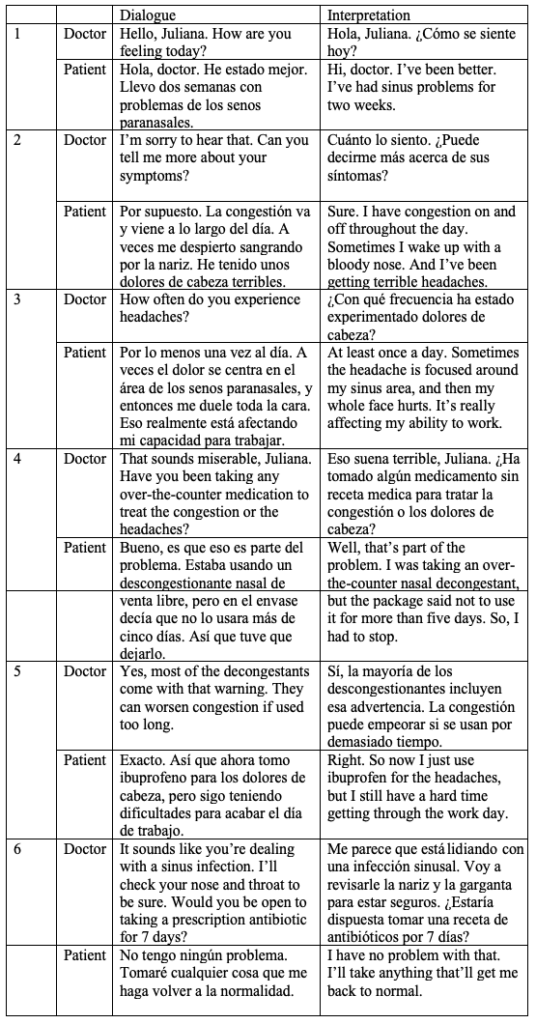The Interpretation test, developed and administered by ALTA Language Services, encompasses all of the important skills you need to demonstrate interpreting proficiency in healthcare settings. The test deals with different types of speech, a variety of vocabulary, and sample dialogue units of different lengths—you must be able to deal with idioms and phrases, and must be able to handle both formal and conversational speech.
The test is designed for candidates who have practiced interpretation skills—whether through formal training or self-study. Individuals with strong oral skills but no interpreter training may find ALTA’s interpreter test quite challenging.
The live interpretation test is given over the phone, with two evaluators participating (one for each language). The Spanish–English Medical Interpretation test is also available through our automated IVR system. To access the IVR practice test, you’ll have to log in to the ALTA portal using your access code as instructed in the email sent to you. You will then have the option to take the sample test over the phone, or through a browser with speakers or headphones and a microphone connected to your computer.
At the start of the test, you will be provided with the following instructions:
Before the test begins, you will be asked:
Scoring & Evaluation
Your performance evaluation focuses on two categories:
Your overall score combines both accuracy and fluency to reflect true interpreting proficiency.
The practice test has 6 dialogues. The regular test has an average of 20 dialogues and is 30-minute long.
Ready to test your interpreting skills? Fill out the form below to get started — or, if you prefer, give us a call at 1-888-465-4648 or email [email protected].

Get started implementing your language strategy today! Fill out the form to the right, or call 1-888-624-6165.
View our test prep materials or FAQ’s for common questions about taking a test.